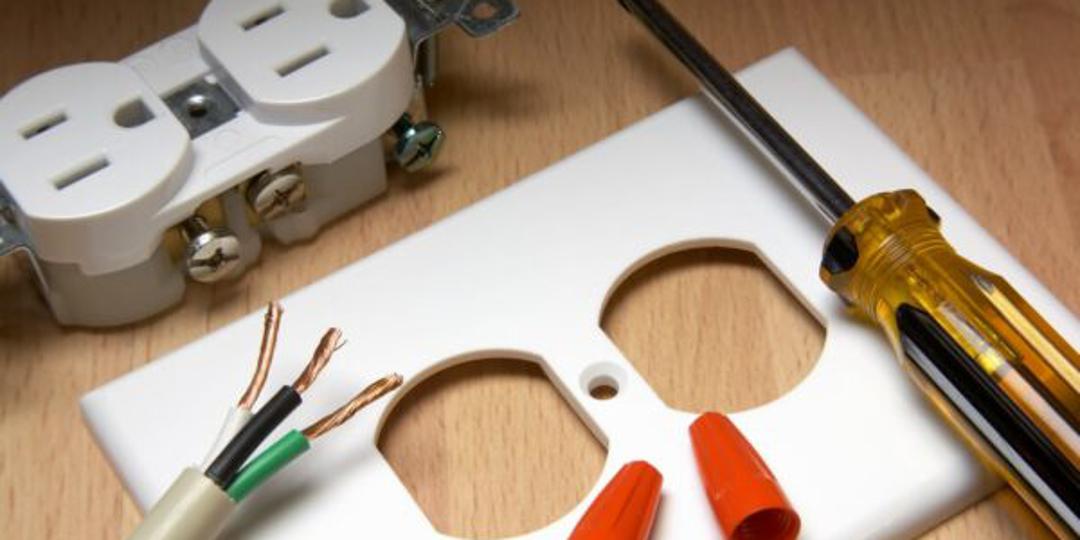When it comes to electrical problems, we can live with a couple of inconveniences, however, there are some seemingly minor electrical issues that may put you in serious danger, or present a code violation. Taking care of the problem as soon as possible not only keeps your electrical system code compliant, but also ensures your family and property remains safe. Below is a list of common electrical issues that while often overlooked, can pose a serious hazard or put you in violation of your city’s code compliance regulations.
Using the wrong light bulb
This is also known in the electrical world as overlamping. Overlamping is when a fixture has a light bulb that is higher than what the manufacturer recommends. Placing the wrong light bulb can cause the fixture or appliance to overheat, melting the socket and possibly catching fire. If you’re unsure about the wattage for your lighting fixture, electricians recommend using a 60-watt bulb or smaller.
- Code violation: Yes
- Hazard level: High
- Cost: Low, usually the cost of a light bulb.
- Uncovered Junction Box
While the danger of an uncovered junction box is minimal, it is still considered a code violation. The solution is easy. Simply purchase a junction box cover at your local hardware store and install it with the provided screws. This will prevent you from failing an electrical inspection and avoid someone damaging the wires or getting shocked.
- Code violation: Yes
- Hazard level: Low
- Cost: Low. Junction covers are usually less than $1.
Flickering Lights
Flickering lights usually mean loose or frayed wiring or damage to your Weatherhead. While this is not a code violation, it is an extreme hazard as it could cause a fire to break out at any time. If you suspect you have loose or frayed wires in your Weatherhead, contact your utility company first and find out if they’ll fix it free of charge. If not, a licensed electrician should be contacted to repair it.
- Code violation: No
- Hazard level: High
- Cost: High. If your utility company won’t fix it, a licensed electrician can start at $1,000.
Not enough outlets
This is a common problem. Not having enough outlets does not put you in violation of code compliance; however, it does cause a heavy reliance on extension cords and power strips. Overloaded power strips can overheat and cause a fire. The solution is adding more outlets. You’ll need to contact a professional since this involves cutting into the walls and ceilings to install new wiring.
- Code violation: No
- Hazard level: High
- Cost: Low/Medium. Price varies greatly depending on the type of outlet you replace and if re-wiring is involved. Price can be as little as $25 or as much as $300.
No GFCI’s in bathrooms or kitchens
The danger non-GFCI plugs present is high, however, not having them is not a code violation. It’s a good idea to have then in wet areas like bathrooms and kitchen to avoid electrocution. If you do not have GFCI outlets, you can always purchase them at your local hardware store for about $12 each. Your local electrician can install them for you for a nominal fee, or you can try putting them in yourself.
- Code violation: No
- Hazard level: High
- Cost: Low. Price could range from $7 to $25. Exact costs depend on quality and style because all GFCI units function the same way.
An over-wired panel
An over-wired circuit panel does not present too much of a danger, however, it is a code violation and will cause you to fail an inspection if you are thinking about selling your home. An easy fix is to ad a sub-panel, or install a larger panel with more slots. You can add a subpanel to augment your existing one for much less than what it would cost you to install a completely new panel.
- Code violation: Yes
- Hazard level: Low
- Cost: High. Panels can start at $250 and go up to $800 depending on what you get and how many.
Aluminum wiring
If your home is older, it may contain aluminum wiring. This kind of wiring was used in the ’60s and '70s as an inexpensive substitute for copper wiring. Aluminum wiring is not a code violation, but it presents a high probability of causing a fire. Aluminum wiring deteriorates quickly, causing arcing, which could then lead to a fire. To minimize the risk of fire, you can replace all of the wirings, which could be costly, or retrofit a dielectric wire nut approved for aluminum wire onto each copper/aluminum connection.
- Code violation: No
- Hazard level: High
- Cost: Low/High. The price greatly depends on what repair measures you choose to employ. Dielectric wire nuts can be found at any hardware store for about $1, however, if you choose to re-wire the price can jump to thousands of dollars—the cost of a licensed electrician.
Outlets with backstabbed wires
An outlet with a backstabbed wire means just that. The wires it’s connected to are literally just stabbed into four holes located behind the outlet. This is not a code violation—in fact, it is a common practice among electricians. The problem is wires can become worn and render the outlet useless. In severe cases, the loose wires can start a fire.
- Code violation: Yes
- Hazard level: Low
- Cost: None. This fix simply requires a screwdriver. First, make sure the current is cut off. Remove the receptacle from the outlet, release the wires and attach them to the appropriate screw terminals on the receptacle.
For help remaining code compliant or with any other electrical issue, call Mister Sparky® of San Antonio at (210) 899-2430 and we’ll send a technician out right away!















